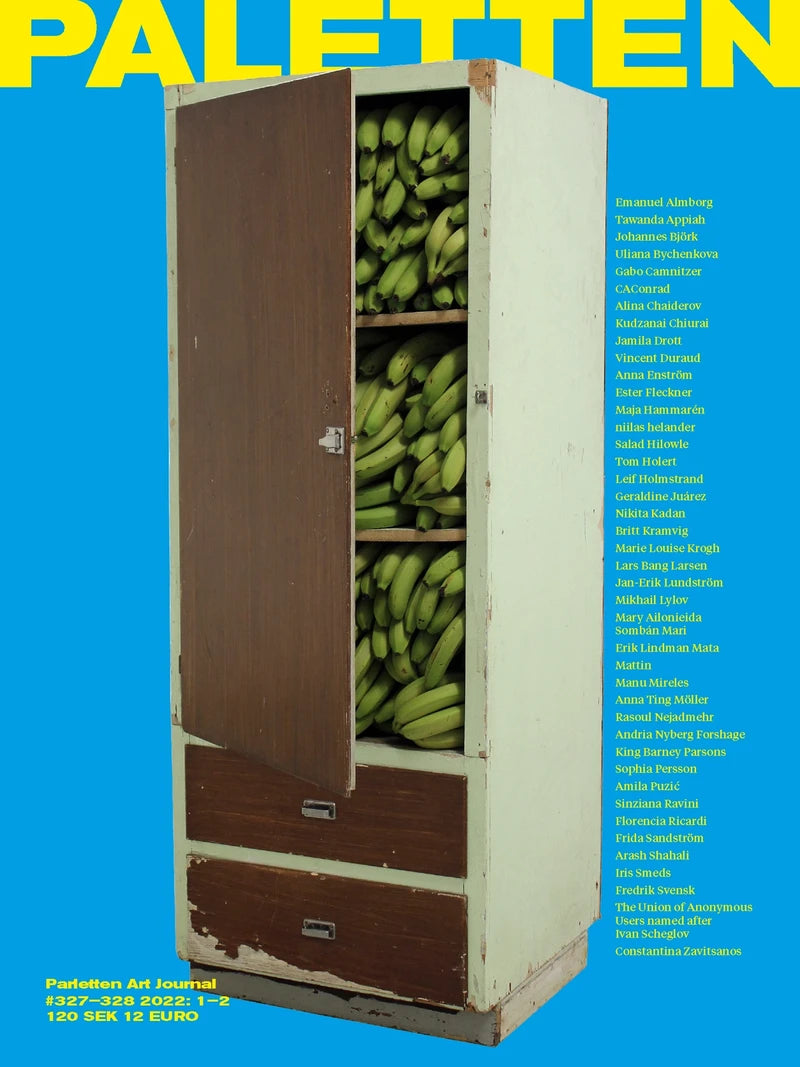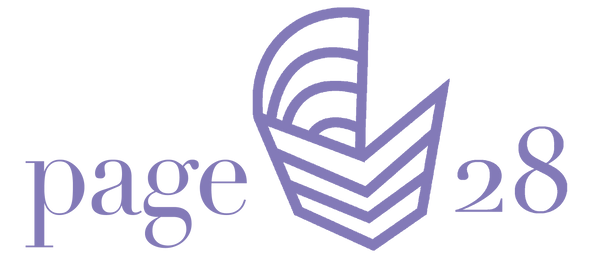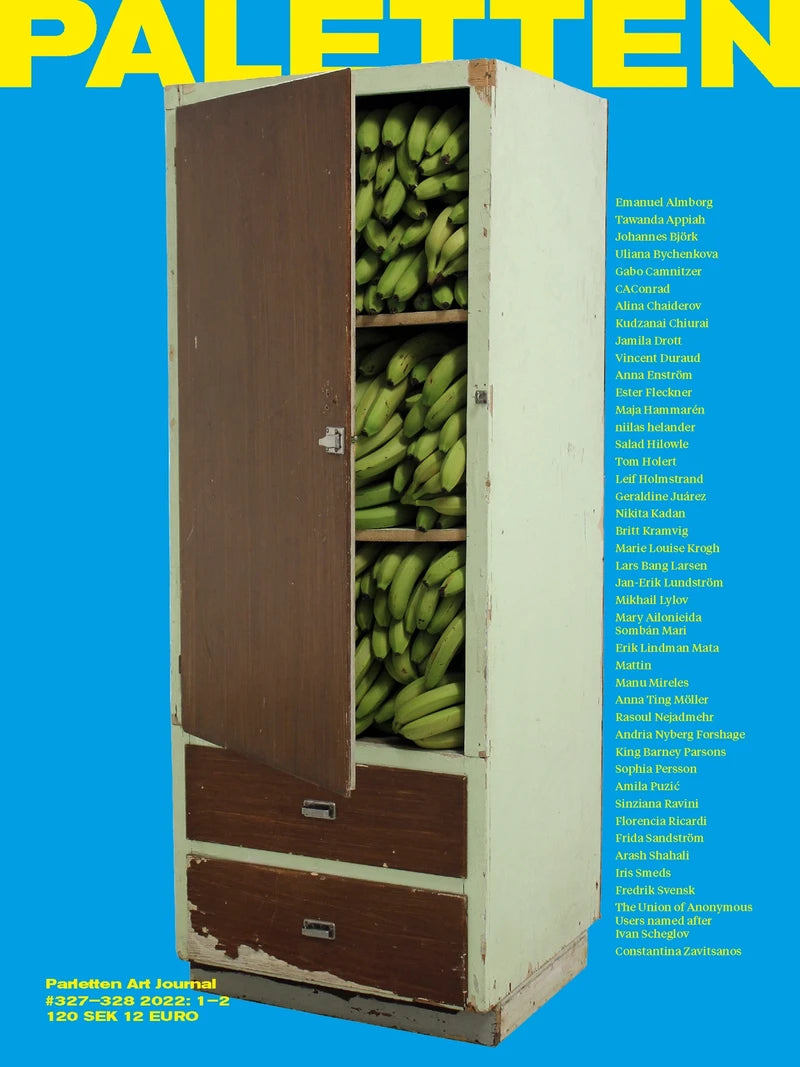Page 28 - HBTQ-bokhandel och kulturscen
Paletten #327-328 2022:1-2
Paletten #327-328 2022:1-2
Det gick inte att ladda hämtningstillgänglighet
Tidskrift. Magazine.
Editorial
This issue of Paletten in English continues our long-term exploration of the role of art and aesthetic culture in a modernity marked by the social relations of capitalism, colonialism, nationalism and sexism etc., on the one hand, and by the struggle for equality, democracy, and freedom on the other. What role does the critical tradition of aesthetic culture play in the war, and for its underlying condition, what can it do, and what is its limitation? If not before, then now, perhaps more clearly.
Paletten rarely makes thematic issues. Instead, we let several different themes develop and intersect over time. In this issue, we are also introducing a new format to give further breadth to some of Paletten's thematic research interests. We call this format "Paletten Asks". Frida Sandström and Fredrik Svensk have been in touch with the people behind projects that in various ways address the role of philosophical aesthetics and the critical tradition in the capitalist, nation-state, and colonial modernity.
Share


